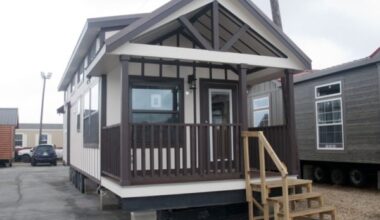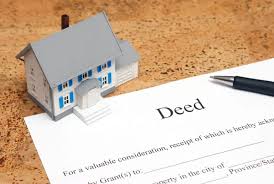A household that qualifies for income-based rent would spend no more than 30% of its monthly adjusted income toward housing expenses, including utilities. If your income is low, you may qualify for low-income apartments in your area. However, it is important to check on the restrictions in your particular location, as some senior income-based apartments are regulated by a complicated web of federal, state, and local guidelines. In this article, we will be talking about income-based apartments with no waiting list.
What Are Income-Based Apartments?
Income-based apartments are apartments available only to those whose income falls under a specific range. They may be owned by the city or by private individuals who get subsidies from the government. Though some complexes have a mix of market-rent and income-restricted apartments, many income-based apartments are found in designated apartment communities.
Public housing, project-based section 8, and section 8 housing choice vouchers are examples of well-known housing schemes that offer income-based apartments.
#1. Public Housing
Housing is provided with assistance under the terms of the 1937 U.S. Housing Act or a state or local program with goals similar to those of the federal program. regardless of whether such housing development includes elements such as federal housing subsidies or mortgage insurance, distinguished from privately financed housing.
#2. Section 8
A federally financed rental assistance program compensates private landlords for the difference between the fair market rent and what a low-income household can pay.
Households can use Section 8 Housing Choice Vouchers (HCV) to get rental assistance when renting on the open market. Section 8’s Project-Based Rental Assistance (PBRA) is tied to a specific neighborhood. Both programs require tenants to pay 30% of their monthly income toward rent, with HUD covering the rest (FMR).
#3. Housing Choice Vouchers
Section 8 Housing Choice Vouchers is HUD’s largest tenant-based rental assistance program for low-income households. 30% of Housing Choice Voucher residents’ monthly income goes to rent, with the remaining 70% paid by the federal government through a regional housing authority. Fair Market Rent limits landlord payments (FMR). HAP stands for Housing Assistance Payment.
Conditions to Qualify for Section 8 Housing Benefits
We’ve mentioned a few common requirements for Section 8 aid, which we’ve mentioned here, even if the specifics of eligibility will differ from PHA to PHA:
- Income Qualifications
- Family Status
- Disabilities
- Citizenship
- Criminal Record
Many families around the nation who may find it difficult to afford sanitary and secure homes on their own might get rental subsidies thanks to housing vouchers. Continue reading if you’re unsure if receiving Section 8 housing aid is the best option for you. We’ve included every prerequisite for Section 8 eligibility, so you can decide for yourself whether to submit an application or not.
What Is the Highest Income for Section 8?
Section 8 housing applicants must earn no more than 50% of the region’s median income. In New York and San Francisco, that’s $117,400 for a family of four. By certain criteria, the cost of living in these places may seem generous.
HUD’s regional and family-size income limits are online. Rent and income based apartments with no waiting list will determine the limits. In San Francisco County, which has the nation’s highest income cap, a single person needs $51,350 to qualify for Section 8. If there are additional people in the household, the maximum Section 8 income may be higher than $96,000. Regardless of family size, your household income must be modest or very low for your home market.
Who Qualifies for Affordable Housing in California?
In California, housing is considered “affordable” if rent and utilities don’t exceed 30% of the monthly income. Most affordable housing is for adults and families earning 60% or less of the regional median income (AMI).
Senior Income-Based Apartments
Seniors over 62 with low incomes might find an inexpensive home under the Section 202 Supportive Housing for the Elderly program. Rent is determined by your adjusted gross income, with money from the program going to affordable housing complexes. Participants pay a maximum of 30% of their total adjusted income toward rent on the senior income-based apartments.
What Is Considered Low Income for a Senior Citizen?
There is no precise amount for this since a person’s location and the size of his or her family will determine whether or not an income is deemed “poor.”
According to data from the U.S. Census Bureau at the time of their United States of Aging Survey, this means that 40% of seniors aged 60 and older are classified as low- to moderate-income. The National Council on Aging (NCOA) defines “low- and moderate-income seniors” as those with an income of less than $30,000 per year. Out of this group of low-income people…
- In the upcoming five to ten years, 46% of people are not certain that their salary will be enough to cover their monthly needs.
- 32% of people lack confidence in their capacity to cover unforeseen costs.
- 41% are not certain they are aware of all the advantages and programs that can be of use to them.
Many governmental and private initiatives offer benefits outside of Social Security payments that give financial assistance to seniors with low income in order to safeguard the expanding population of aging baby boomers and maintain low poverty rates. Help is available in a wide range of forms, including benefits that help with housing costs like senior income-based apartments, prescription medicine prices, adequate nutrition, and more.
What Is the Difference Between Income Based and Income Restricted Apartments?
In a rising rental environment, especially in metropolitan cities, the need for affordable rental property has never been greater. If you’re looking for affordable apartments based on a low income for a senior, you know how tough it can be to find one. Several apartment complexes and neighborhoods offer affordable housing.
The occupant(s) spends no more than 30% of his or her earnings on housing, including utilities. Some jurisdictions may define more due to local and federal subsidies for low-income families, the elderly, or those with developmental impairments.
These two categories—income-restricted and income-based—offer low-income persons affordable accommodation. Despite having the same goal, these programs are different. Let’s explore these three differences.
#1. Property Eligibility Requirements
Privately owned planned communities for senior, low, and moderate-income-based tenants sometimes have income-restricted apartments. Nonprofits and regional and federal governments sponsor these projects. It’s part of HUD’s affordable housing programs (HUD). Properties must participate for 30 years. A low-income neighborhood won’t rent to high-earners.
Private landowners that provide senior income-based apartments must meet specific conditions. If the property isn’t new, the landlord must repair it per HUD rules. Twenty to forty percent of these units are low-income. Income-based housing includes duplexes, townhouses, and single-family dwellings.
#2. Requirements for Tenant Eligibility
Income-restricted housing aid requires particular income levels. Income-restricted housing requires a minimum household income.
The HOME Program uses three income definitions to determine eligibility:
24 CFR 5.609 annual income;
Your yearly… More must be 60% or less of the local median income.
This region’s median income varies widely. New York City’s median salary is far higher than a Midwest or Southern small town. A New York City resident with a higher salary in a more expensive area may qualify for income-restricted housing.
The qualifying criteria for an income-based apartment complex are likewise based on the local median income, but the cutoff is lower. For income-based housing, your household income must be at or below 50% of the area’s median income.
#3. Rent Calculation Method
How rent rates are determined is another distinction between housing that is income-based and that that is income-restricted. For income-restricted housing, the monthly rent is based on a portion of the local median income, taking into consideration both the size of the apartment and current rental market prices. Rents may vary and be adjusted, but they cannot go above local market rates. The sum that the renter pays is the set rental payment. The government subsidizes the gap between the rental rate advertised and the market value to pay the landlord.
Income-based housing rent is dependent on the resident’s income, not the property’s value. HUD calculates income-based apartment rent using 30% of the tenant’s adjusted gross income. The government subsidizes the landlord’s rent.
How Much Is a Low Income Household?
A 2018 Pew Research Center study categorized 29% of American households as “lower class” households. The median earnings for that category in 2016 were $25,624.
Income-Based Apartments with No Waiting List
However, due to the tremendous demand for inexpensive housing, it’s rare to find none. It’s true. Most income-based programs have waiting lists. To find a rare opportunity in income-based apartments with no waiting list, you must call, email, and search the internet.
With so many low-income housing rental assistance programs, it’s worth signing up for a few at once or as openings arise. Knowing about different programs’ waiting lists may decrease your wait. First, we’ll go over the fundamentals of the no-waiting list for the various forms of low-income based apartments:
#1. Rental Assistance Demonstration
Properties designated as RAD are public housing complexes that have undergone rehabilitation utilizing Section 8 funds. Current tenants were given preference for a RAD unit above those on the property’s public housing waiting list when RAD was launched.
Nationally, local HUD housing authorities are working hard to convert our public housing stock to RAD units. It may be challenging and time-consuming to find RAD income-based apartments with no waiting list at the present moment.
#2. Public Housing
Rental help is available at some public housing complexes, however, it is complex-specific. Public housing vouchers, like PBVs, are not portable.
Either a HUD housing authority or a cooperating property management company handles the upkeep of waiting lists. Similar to PBVs, there is typically a waiting list for public housing. It’s possible that some homes in more remote places keep their waiting lists to a minimum, or even don’t have any at all.
#3. Rural Development Housing
Many Rural Development rental assistance apartments may have a far shorter waiting list than other HUD-funded flats if any at all. These neighborhoods are often owned or managed privately, however, some are run by public housing agencies.
If your household has a low or nonexistent income, you may be able to move into an apartment before other applicants if your household qualifies for priority housing.
#4. A Tax Break for People With Lower Incomes
At present, 90% of all new low-income housing complexes are funded under the LIHTC program. These neighborhoods are typically overseen by private management firms or individual proprietors, however, some are under the purview of local housing authorities. Some LIHTC homes may have no waiting list if they are located in rural areas.
What Is Income Restricted Housing in Texas?
In Texas, the maximum rent for an income-restricted apartment varies by unit size and is capped at a certain percentage of the local median income. The remaining portion of the rent’s market value is subsidized by the government.
How Do I Qualify for Low-Income Apartments in California?
In California, you must be a citizen or legal immigrant to qualify for Section 8 or public housing. Your salary must be below 80% of the median. Most voucher recipients make less than 30% of their neighborhood’s median income. Priority is given to homes with young children, pregnant women, or elderly or disabled caregivers; however, each application is considered individually. In Los Angeles, you must pass a criminal background check and have debts below 60% of your monthly income.
How Can I Get Free Housing in California?
In California, there aren’t any choices for free housing right now. Visit your nearby Public Housing Agency to submit an application for any kind of assistance (PHA)
What About Section 8 Housing Choice Vouchers?
Another way the government assists in providing low-income households with rental assistance is through Section 8 housing choice vouchers. Housing choice vouchers must, however, only be used for non-subsidized rentals, according to the law. Since both income-restricted and income-based housing are supported by the government, they are typically unsuitable for Section 8 financing.
However, since Section 8 vouchers frequently have lengthy waitlists, it is usually more quicker and simpler to find housing that is income-based or income-restricted. Get in touch with your neighborhood public housing authority for further details.
What Is the Most to Qualify for Low Income Housing?
The lower income limitations are set by HUD at 80%, while the extremely low income restrictions are set at 50% of the county’s or metropolitan area’s median income. You might be qualified at one HA but not at another due to different income restrictions in each area.
What Does Income Restricted Mean?
Housing that is income restricted is only available to families making under a specified amount of money. Your household size and overall income will determine your eligibility. Income-restricted housing is available in Boston and the surrounding area for both rent and purchase, according to the Department of Neighborhood Development: Search Homes with Income Restrictions
Does Chicago Have Low Income Housing?
The third-largest public housing organization in the country is the Chicago Housing Authority. By offering secure, decent, and affordable housing in thriving, healthy communities, CHA provides homes for more than 20,000 low-income households.
How Does Public Housing Affect the Economy?
They produce economic activity through their operations, the relocation of households from unstable to stable housing, the support of local rental housing markets, and the patronage of companies that provide ongoing maintenance and property management services.
Conclusion
In conclusion, income-based apartments should now be clear that these homes are meant for folks who need affordable accommodation. Sadly, cheap properties are in demand. There are 37 affordable housing units for every 100 low-income Americans. Only 25% of individuals eligible for FHA are served. Income-based apartments continue to help low-income people live better.
Income Based Apartments FAQs
What is a low income person?
A low-income person is a household member with a gross annual income of 125% or less of the federal poverty limit.
What does income restricted mean in Florida?
A size-based proportion of the area’s median income caps income-restricted apartment rent.
Who is affected by poverty?
The likelihood of poverty, the length of time spent in poverty, and the depth of poverty are all higher for children, single parents, the disabled, and those living in families where no one works.
Related Article
- HOW TO RENT WITH BAD CREDIT: Ways to Rent a House With Bad Credit
- HOUSING EXPENSE RATIO: What It & How To Calculate it
- HOUSING RATIO: How to Calculate Housing Ratio with Ease (+ Free Tools
- TOWNHOUSE: Definition, Pros, Cons & All You Need (+ Free Tips
- LOWEST PROPERTY TAX STATES: States with the Lowest Property Taxes in 2023






